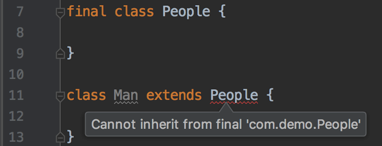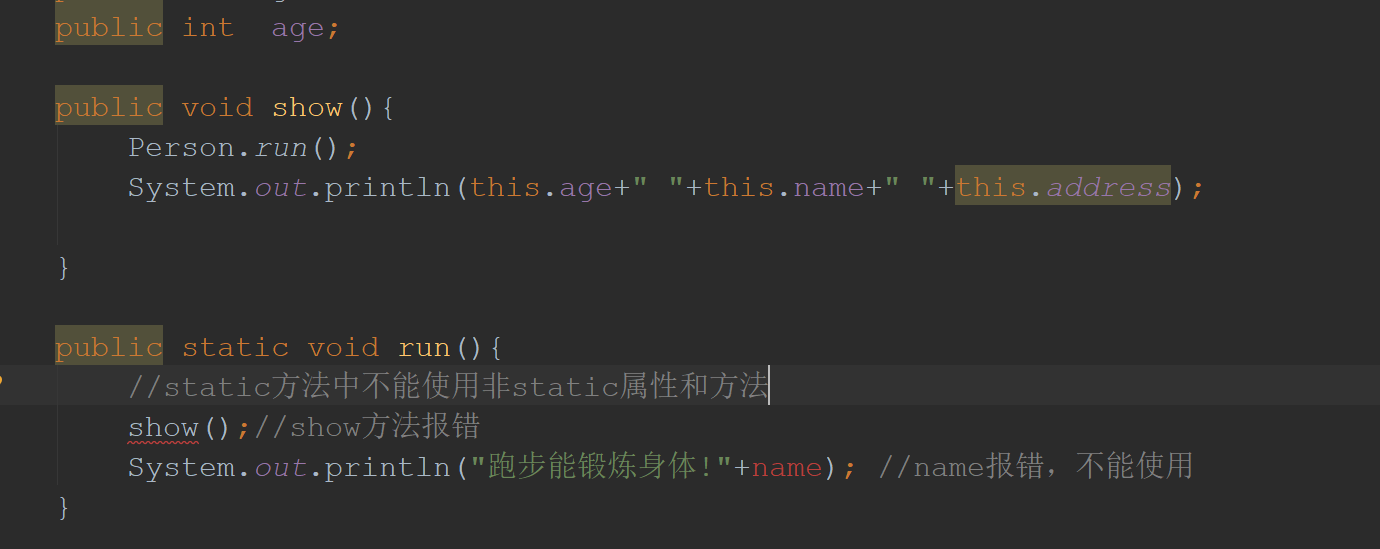不能被继承,因为String类有final修饰符,而final修饰的类是不能被继承的。
Java对String类的定义:
public final class String implements java.io.Serializable, Comparable<String>, CharSequence { // 省略... }
final修饰符的用法:
1.修饰类
当用final修饰一个类时,表明这个类不能被继承。final类中的成员变量可以根据需要设为final,但是要注意final类中的所有成员方法都会被隐式地指定为final方法。

2.修饰方法
使用final修饰方法的原因有两个。第一个原因是把方法锁定,以防任何继承类修改它的含义;第二个原因是效率。在早期的Java实现版本中,会将final方法转为内嵌调用。但是如果方法过于庞大,可能看不到内嵌调用带来的任何性能提升。在最近的Java版本中,不需要使用final方法进行这些优化了。
注:一个类中的private方法会隐式地被指定为final方法。
3.修饰变量
对于被final修饰的变量,如果是基本数据类型的变量,则其数值一旦在初始化之后便不能更改;如果是引用类型的变量,则在对其初始化之后便不能再让其指向另一个对象。虽然不能再指向其他对象,但是它指向的对象的内容是可变的。
static的用法
Static修饰的成员属性和成员方法是和类相关的,没有Static修饰的成员方法和属性是和对象相关的。
Static修饰的成员变量属于全局变量,所有对象共享这个成员变量。(用类名调用)
public class Person { //对象共有的属性 static String address; //每个对象根据实际情况拥有属性 public String name; public int age; public void show(){ System.out.println(this.age+" "+this.name+" "+this.address); } } public static void main(String[] args) { Person.address="中国"; Person p1=new Person(); p1.age=11; p1.name="lili"; p1.show(); Person p2 =new Person(); p2.name="xiaohong"; p2.age=12; p2.show(); }
Static修饰的成员方法内部只能用Static修饰的变量和方法。

Static修饰的代码块,是在类加载时使用。因为虚拟机对类只加载一次,在构造方法之前执行。
public class Person { static { System.out.println("执行静态代码块"); } //对象共有的属性 static String address; //每个对象根据实际情况拥有属性 public String name; public int age; public void show(){ Person.run(); System.out.println(this.age+" "+this.name+" "+this.address); } public static void run(){ //static方法中不能使用非static属性和方法 System.out.println("跑步能锻炼身体!"); //name报错,不能使用 } } public static void main(String[] args) { Person p1=new Person(); p1.age=11; p1.name="lili"; p1.show(); Person p2 =new Person(); p2.name="xiaohong"; p2.age=12; p2.show(); }
静态方法里不能用this关键字。